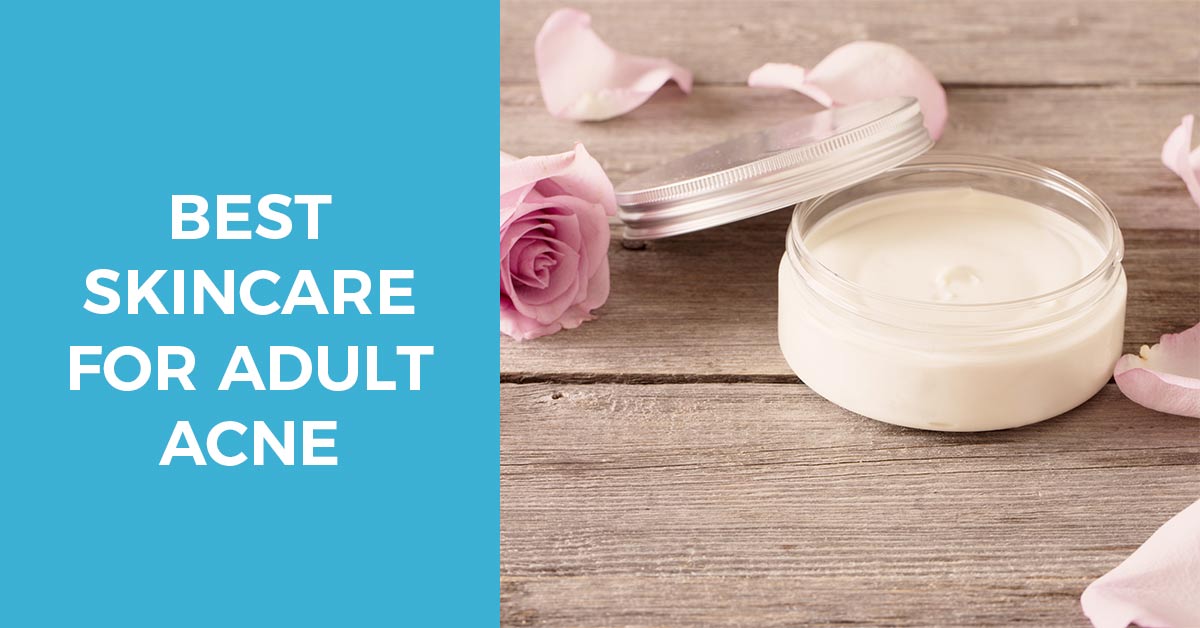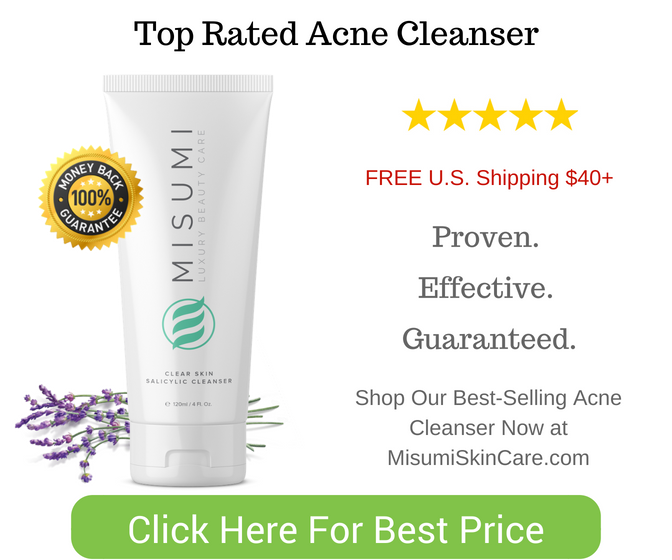Contents
You, like me, may have assumed that spotty faces are something that are synonymous with teenage years. Eventually, we’ll grow out of it. Right?
Wrong.
Unfortunately, we’ve been living a lie for many years because acne and blemishes can occur throughout your 20s, 30s, 40s, and even 50s. Geniusly named “adult acne,” this is a common skin complaint that can develop to be just as bad, if not worse, than the acne you experienced during your younger days.
It’s a depressing thought, isn’t it? Battling acne and wrinkles at the same time just doesn’t seem fair, especially when some of us have been through the trauma of teenage acne already.
However, before you hide away with a box of chocolates, some tissues, 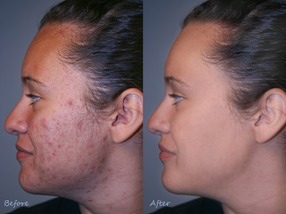 and a romantic comedy, let me reassure you. Adult acne can be combatted, and without too much trouble. Simply by knowing what causes your acne and what helps get rid of it can help you create the best skincare routine for your adult acne.
and a romantic comedy, let me reassure you. Adult acne can be combatted, and without too much trouble. Simply by knowing what causes your acne and what helps get rid of it can help you create the best skincare routine for your adult acne.
So below, you’ll find an introduction to adult acne, its causes, and the best skincare prevention techniques out there, including some recommended products.
Adult acne: 0 – Us: 1.
I published an article about traditional acupuncture to fight acne
What Causes Adult Acne?
A recent report suggests that we’re almost experiencing an “epidemic” when it comes to adult acne. In 2015, a study involving 92 private dermatology clinics discovered a 200% rise in the cases of adults looking for specialist treatment for their acne. And women are 5 times more likely to suffer from acne later on in life than men. This is due to their fluctuating hormones caused by methods of contraception, pregnancy, menopause, and the menstrual cycle.
Adult acne is caused when your skin starts 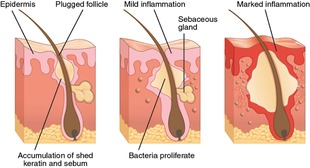 to over-produce sebum (the natural oil it uses to keep your skin supple and moist). As this oil mixes with different things, like dirt and dead skin cells, it can clog your pores. Once your pores have been blocked, the trapped bacteria can start to grow inside the pore. This causes the redness and swelling that you see when you get spots, while cysts and other angry pimples are caused when your pores’ walls break down due to the buildup of bacteria within them.
to over-produce sebum (the natural oil it uses to keep your skin supple and moist). As this oil mixes with different things, like dirt and dead skin cells, it can clog your pores. Once your pores have been blocked, the trapped bacteria can start to grow inside the pore. This causes the redness and swelling that you see when you get spots, while cysts and other angry pimples are caused when your pores’ walls break down due to the buildup of bacteria within them.
The rise in adult acne cases has been caused by a number of contributing factors that lead to clogged pores. These include certain medications, cosmetic products, pollution, smoking, and wearing certain items of clothing (e.g. headbands). However, as we’ve seen above, a lot of it also arises as a result of our hormones, with them fluctuating sporadically, which causes the skin to start producing more oil than necessary.
You might also suffer from acne if your parents or siblings suffered from it, too, as acne has been found to be genetic.
Ingredients that Help Fight Acne
When shopping for products to include within your skincare routine, here are some of the ingredients you should look out for:
- Benzoyl peroxide: This not only kills the bacteria that causes acne, but also works to exfoliate your pores and remove excess dirt and dead skin cells, too. That’s why it isn’t too gentle on your skin, so you shouldn’t use it too much, especially if your skin’s particularly sensitive or becomes dry and irritated after use. Ideally, you should introduce benzoyl peroxide when spots appear.
- Salicylic acid: This should be your go-to treatment when you’re suffering from acne, and you may find it labeled up as “beta-hydroxy acid” instead. It works to unclog your pores by gently exfoliating them, which is why you’ll find this ingredient in a lot of the over-the-counter spot treatments and cleansers you can buy. As it’s quite gentle in nature, you should be able to use this across your entire face.
- Sulfur: Another ingredient that’s perfect for spot treatment, sulfur helps draw oil out of your skin, having a drying effect that fights the cause of acne. You’ll also find this ingredient in some types of face masks.
- Glycolic acid: This is an exfoliating ingredient, an alpha-hydroxy acid, that targets wrinkles and acne in one (bonus!). It works by removing any dead skin cells from the surface of your skin, which helps to stimulate hyaluronic acid and collagen. This helps reduce fine wrinkles and lines while also improving your skin’s texture and clearing up spots.
- Retinol: Derived from Vitamin A, this product is something your skin will readily absorb and convert into retinoic acid. You may be prescribed Retin-A. Also known as topical retinoids, these are an incredibly effective treatment for acne and also boast anti-aging properties due to the way they help build up collagen. Unfortunately, though, these topical retinoids can be harsh, which means you might not be able to use them if you’ve got sensitive skin. However, there are some gentle over-the-counter options available.
Step One - Cleanse Your Face
And if you do know when you’re more prone to breakouts (this might be the case for women and their menstrual cycles), try to find a cleanser that contains salicylic acid which you use during this time. A week before you start menstruating, your skin is likely to produce more oil, so the salicylic acid will reduce inflammation and sebum production, reducing your risk of having a breakout. 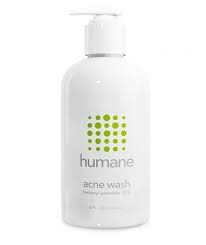 It’ll also get rid of any dead skin cells, providing your skin with a good exfoliation, which is recommended in step three.
It’ll also get rid of any dead skin cells, providing your skin with a good exfoliation, which is recommended in step three.
To get the most out of your cleanser, massage it deep into your skin before rinsing it off with warm (not hot) water. Then, pat your skin dry – don’t rub it.
As the best cleanser, we recommend HUMANE Face and Body Wash that you can buy on Amazon.
Step Two - Introduce Spot and Inflammation Treatments
If you are using retinoids or retinol, make sure you’re applying them at night. Then, the next day, you’ll need to apply sunscreen because they do make your skin more sensitive to the sun’s UV rays, which means you’re more likely to burn. What’s more, the effectiveness of these products can be reduced by the sunlight.
Equally, due to the harshness of retinoids, you should start by using the product two to three times a week to build up your skin’s tolerance to it. Apply a pea-sized amount.
For treatment programs that combine cleansing, spot, and anti-inflammatory properties, we recommend the Positively Clear 3-Step Acne Skincare Solution and the Acne 3 Step Acne Treatment Kit for Sensitive Skin.
Step Three - Begin Exfoliating
Therefore, exfoliating is a good practice, but only if you know when to stop. Ideally, at the start, you should only exfoliate around two to three times a week. This will help in your fight against acne by not only treating it but by preventing it too. Exfoliating your skin helps remove any dead skin cells and clear your pores, which reduces the risk of bacteria developing.
To get the most out of your exfoliation treatment, try using a product that contains glycolic acid as this will get deep into your skin and target acne right at the core.
Step Four - Don’t Squeeze or Pick Spots
Step Five - Apply the Right Type of Makeup
Makeup and acne can create a vicious circle. You use makeup to cover your spots up but this makeup clogs your pores and causes more spots to appear. 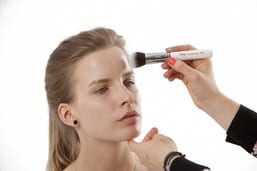 So, how do you go about your day feeling confident but without making your spot issue worse?
So, how do you go about your day feeling confident but without making your spot issue worse?
Try looking for cosmetic products that have non-comedogenic properties or ones that are deemed as being non-acnegenic (won’t cause breakouts). Some cosmetic products have also been developed to fight spots, too, which is why they’ll contain salicylic acid.
Step Six - Target Dark Marks Left Behind by Acne
However, there is a difference between this hyperpigmentation and scars. Even though hyperpigmentation can be treated at home with an effective regimen, scars may need expert help. There are a number of options available, from microneedling and subcision to laser treatments, and it’ll depend on the severity of your acne as to which is best for you.
Step Seven - Be Patient
If, after a few months, your skin isn’t improving, you may want to seek the advice of your doctor or dermatologist, who may be able to prescribe you something stronger. Over-the-counter treatments might not be strong enough for moderate cases of acne, and severe cases will often require something even more potent, like prescription medications (antibiotics, Aldactone, or Isotretinoin, for example).
Conclusion
And remember – even after your acne has gone, try to retain a good skincare routine to make sure no breakouts flare up again.
Do you have adult acne? What treatments have you tried and which have you found to be most effective? We’d love for you to share your skincare routines with us in our comments box below!

